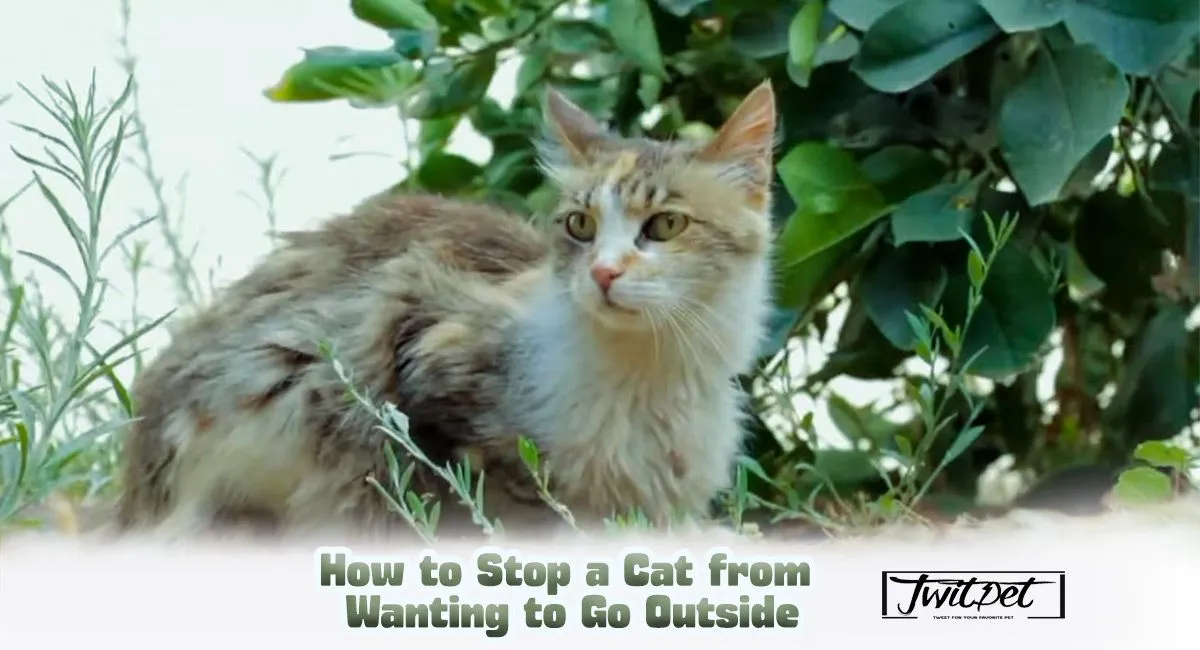Are you struggling with a cat that constantly seeks adventure outside? Fear not! This guide is here to arm you with practical strategies to keep your cat happy and safe indoors, curtailing their urge to explore the great beyond. With the right approach, you can ensure your feline friend finds their indoor environment as thrilling as the outdoors.
My cat wants to go outside. Should I let him? Step by Step
- Enrichment: Turn your home into a cat playground. Diverse toys and structures cater to your cat’s hunting, climbing, and scratching instincts, providing an outlet for their energy and curiosity.
- Security: Make exits less appealing and more challenging to navigate. This prevents accidental escapes and reduces the allure of the outside world.
- Mental Engagement: Introduce toys and games that challenge your cat’s intellect, keeping them busy and mentally stimulated.
- Physical Activity: Regular, active playtime is crucial. It simulates the physical exertion they would experience outdoors, keeping them fit and tired.
- Stable Routine: Cats thrive on predictability. A set schedule for feeding, play, and rest can make indoor life more appealing.
- Natural Deterrents: Strategically placed deterrents can discourage your cat from lingering near doors or windows, curbing their escape attempts.
- Calming Signals: Pheromone diffusers or sprays can help soothe anxiety or stress, making your cat more content with indoor life.
- Professional Insights: Persistent issues may require expert advice. A vet or behaviorist can offer tailored strategies to encourage indoor contentment.
How to Stop a Cat from Wanting to Go Outside: Details
Understanding Your Cat’s Outdoor Cravings
Many cat owners face the challenge of their pets trying to dart outside at every opportunity. The allure of the outdoors, with its myriad of smells, sights, and sounds, can be vital for a curious cat. However, the outside world poses numerous dangers, including accidents, diseases, and potential fights. Ensuring your cat’s safety means providing a stimulating indoor environment that meets their instinctual needs.
Key Strategies to Keep Your Cat Indoors
- Enrich the Indoor Environment
- Toys, scratching posts, and climbing areas keep your cat engaged.
- Regular playtime ensures they receive the necessary exercise and stimulation.
- Strengthen Home Security
- Install screens and childproof locks on doors and windows.
- Citrus peels or pet-safe repellents can act as natural deterrents.
- Boost Mental Engagement
- Puzzle toys and food-dispensing devices challenge your cat’s mind.
- Seek Professional Advice
- Persistent desires to explore outdoors may require a vet’s input for additional strategies.
Implementing Effective Indoor Strategies
- Create a Playful Sanctuary: Incorporate interactive toys and establish a play routine. This mimics the outdoor experience minus the risks.
- Routine is Comfort: A consistent feeding, play, and quiet time schedule can make indoors more appealing.
- Pheromone Peace: Consider pheromone diffusers to soothe and comfort your cat, making the indoor environment more inviting.
Addressing the Root Cause: Why the Great Outdoors?
Cats’ instincts to hunt, explore, and mark territory drive them outside. If these needs aren’t met indoors, the call of the wild becomes irresistible. Transitioning a cat from outdoor adventures to indoor bliss involves understanding and fulfilling these instinctual behaviours in a safe, controlled manner.
Safeguarding Your Cat’s Well-being
The risks of letting a cat roam free are numerous and severe. The great outdoors is fraught with hazards, from traffic accidents to fights and diseases. An indoor life can be safe and satisfying when properly enriched, offering controlled adventures without risks.
Transforming Indoors into a Cat’s Paradise
To make the indoors as appealing as the world outside, focus on vertical spaces for climbing, scratching options for marking, and interactive toys for hunting. These elements help satisfy your cat’s instincts safely within your home.
Considering Leash Training
For those wanting to take their cat safely outdoors, leash training offers a compromise. It requires patience and the right gear but can provide controlled exploration under your watchful eye.
Conclusion: A Happy Indoor Cat
Transitioning your cat to an indoor lifestyle doesn’t have to be a struggle. Understanding and creatively addressing their needs within your home can provide an enriching environment that satisfies their curiosity and instincts. Regular engagement, security measures, and patience will ensure your feline friend finds joy in their indoor kingdom.
Every cat is unique, and their transition will require understanding, patience, and time. By consistently applying these strategies, you’re not just keeping them indoors; you’re ensuring they’re engaged, happy, and safe in their indoor environment.
